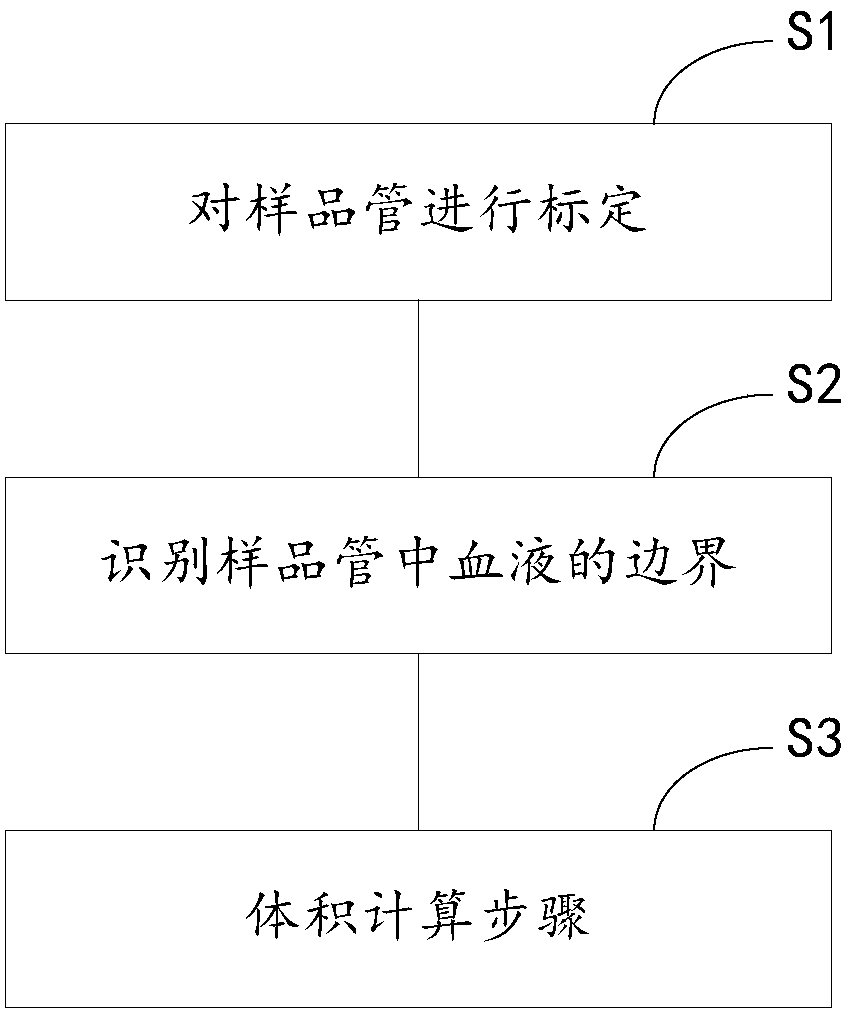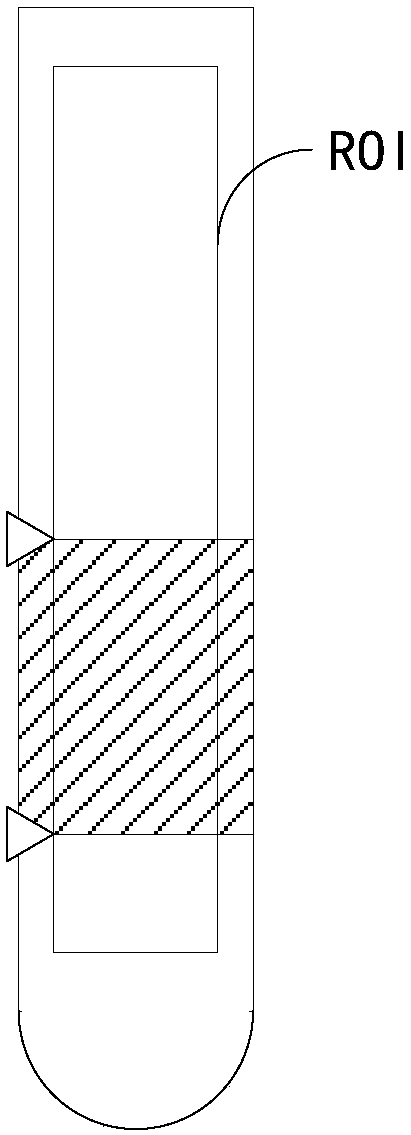blood stratification identification method
An identification method and blood technology, applied in the field of blood identification, can solve problems such as slow measurement speed, human eye injury, and biological safety hazards
- Summary
- Abstract
- Description
- Claims
- Application Information
AI Technical Summary
Problems solved by technology
Method used
Image
Examples
Embodiment 1
[0036] See figure 2 The present invention discloses a method for identifying blood stratification, which includes the following steps:
[0037] [Step S1] Calibrate the sample tube.
[0038] Add liquid with a volume of V1 to the sample tube, measure its first physical height Hphysic1, take a picture of the sample tube at a fixed object distance, set the region of interest ROI on the photo, and record its corresponding position in the image HpictureCalib1 ;
[0039] Perform a calibration every set unit volume, record its physical height Hphysic, and the corresponding position HpictureCalib in the image to form a calibration table;
[0040] [Step S2] Identify the boundary of blood in the sample tube.
[0041] Take a picture of the sample tube at a fixed object distance. There are 2 color change positions in the ROI of the image, such as image 3 Shown. See Figure 4 , Count the sum of the gray values of all pixels at each height of the ROI of the region of interest, the generated curv...
Embodiment 2
[0048] A method for identifying blood stratification, which includes the following steps:
[0049] Step S1: Calibrate the sample tube; do a calibration every set unit volume, and record its physical height and corresponding position in the image;
[0050] Step S2: Identify the boundary of the blood in the sample tube; take a picture of the sample tube at a fixed object distance, and there are 2 color change positions in the ROI of the image; count the gray values of all pixels at each height of the ROI Sum, the generated pixel curve has two cliff-like declines. In the pixel curve diagram, the corresponding sample tube image is found from top to bottom to find the first down jump position, and the pixel curve diagram corresponds to the sample tube image from bottom to bottom. Find the position of the first upward jump on the top, so as to obtain the specific image positions at the two boundaries; the difference between the specific image positions at the two boundaries is the pixe...
PUM
 Login to View More
Login to View More Abstract
Description
Claims
Application Information
 Login to View More
Login to View More - R&D
- Intellectual Property
- Life Sciences
- Materials
- Tech Scout
- Unparalleled Data Quality
- Higher Quality Content
- 60% Fewer Hallucinations
Browse by: Latest US Patents, China's latest patents, Technical Efficacy Thesaurus, Application Domain, Technology Topic, Popular Technical Reports.
© 2025 PatSnap. All rights reserved.Legal|Privacy policy|Modern Slavery Act Transparency Statement|Sitemap|About US| Contact US: help@patsnap.com



